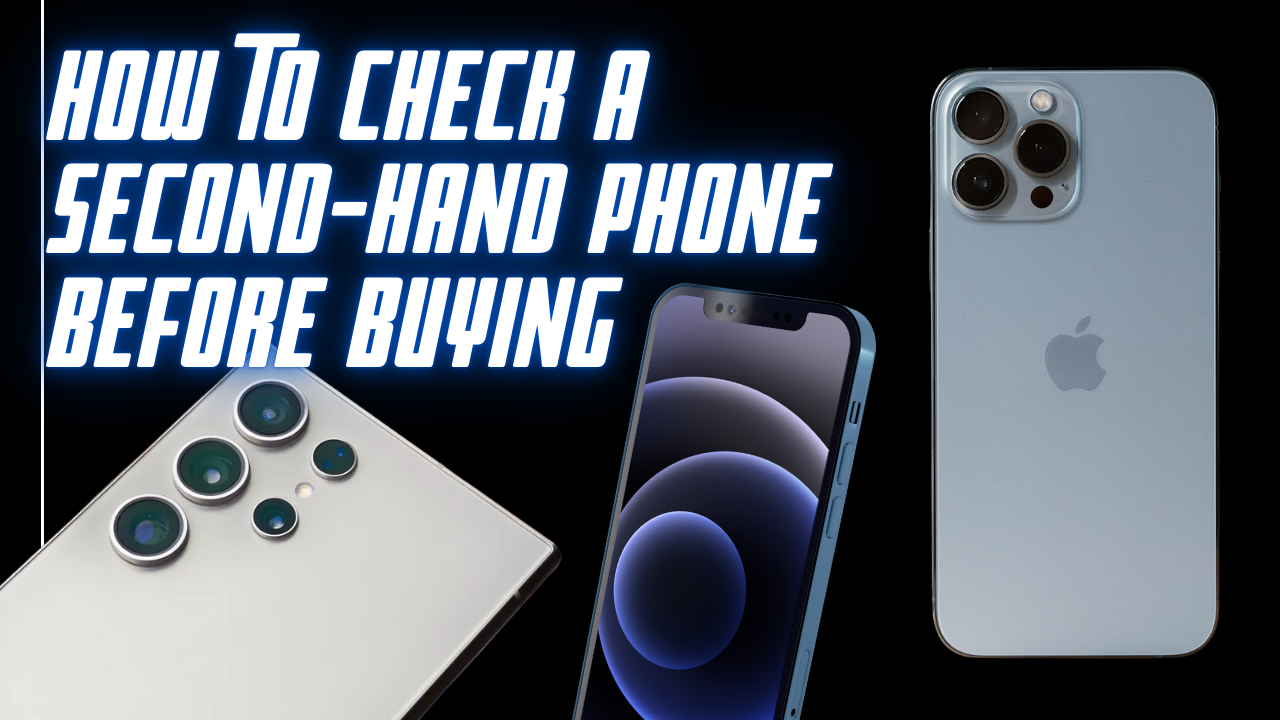A risk factor buying a second hand phone saves you a lot of money. Whatever your reason for replacing your phone is, you need to ensure that you do it thoroughly looking for an affordable upgrade or a temporary replacement. In this guide, you will learn how to check a second hand phone to know if you are getting a reliable device that will suit you.
Why Check a Second-Hand Phone Before Buying?
There might be many hidden issues which you can’t spot from your eyes. Common risks include:
- Hardware Damage: Cracks, scratches, or faulty components.
- Software Problems: Outdated or malfunctioning operating systems.
- Stolen Devices: Phones that are blacklisted or reported stolen.
- Battery Wear: Reduced battery life due to prolonged usage.
Careful inspection will keep you out of these traps and guarantee your money is worth it.
Checklist for Checking a Second-Hand Phone
Here’s a detailed checklist to guide you through inspecting a second-hand phone:
1. Inspect the Physical Condition
Check the phone externally since it should still be in good condition.
| Component | What to Check |
|---|---|
| Screen | Look for cracks, scratches, or dead pixels. |
| Body | Check for dents, scratches, or bent frames. |
| Ports | Ensure charging and headphone ports work. |
| Buttons | Test power, volume, and home buttons. |
| Camera | Verify lenses are clean and free of damage. |
2. Verify the Phone’s IMEI Number
So each phone has a unique identifier called International Mobile Equipment Identity (IMEI). You can use it to check whether your phone is stolen or blacklisted.
How to Find the IMEI:
- Dial
*#06#on the phone’s dialer. - Look for the IMEI on the device box or settings under About Phone.
Check IMEI Online:
Visit websites like IMEI.info or your carrier’s IMEI checker to confirm the device’s status.
3. Test the Hardware
Do the basic functionality tests to check that the phone’s hardware is functional.
Key Hardware Tests:
| Hardware Component | Test |
|---|---|
| Screen Touch | Swipe, tap, and test multi-touch. |
| Speakers | Play music or make a call to check sound. |
| Microphone | Record audio and play it back. |
| Sensors | Use apps like Sensor Test to verify. |
| Vibration | Enable vibration mode to test feedback. |
4. Check the Battery Health
Second-hand phones often have reduced battery capacity due to prolonged use.
Steps to Check Battery Health:
- On iPhone: Go to Settings > Battery > Battery Health to view the maximum capacity.
- On Android: Use apps like AccuBattery to check battery performance.
Pro Tip: A good battery should retain at least 80% of its original capacity.
5. Inspect the Software
The phone’s software should be up-to-date and free from bugs or malware.
Steps to Check Software:
- Ensure the phone is running the latest version of its operating system.
- Check if apps open without crashing.
- Reset the phone to factory settings to remove old data and potential malware.
6. Test Connectivity
Verify that all connectivity options are working as expected.
Key Connectivity Tests:
| Feature | Test |
|---|---|
| Wi-Fi | Connect to a network and browse. |
| Bluetooth | Pair with another device. |
| Mobile Network | Insert a SIM card to check signal strength. |
| GPS | Use a maps app to test location accuracy. |
7. Assess the Price
Compare the phone’s price with its market value to ensure you’re getting a fair deal.
Tools to Check Prices:
- Websites like eBay or Swappa for used phone prices.
- Retailer trade-in programs for value estimates.
Tips for Safely Buying a Second-Hand Phone
- Buy from Trusted Sellers: Instead go with certified resellers, online websites with buyer protection, or trustworthy people.
- Get a Warranty or Return Policy: If you can, go for a phone with limited warranty or return option, if possible.
- Meet in Public Places: Meet in cafes or police stations, etc., in safe places, for in person transactions.
- Request Original Accessories: Ask for the charger and the earphones and original box if with it.
Red Flags to Watch Out For
| Red Flag | Why It’s a Concern |
|---|---|
| Missing IMEI or mismatched number | May indicate a stolen device. |
| Unresponsive seller | Could be hiding defects or scams. |
| Factory reset not possible | Could mean the phone is locked or tampered with. |
Comparison of New vs. Second-Hand Phones
| Aspect | New Phone | Second-Hand Phone |
|---|---|---|
| Cost | High | Affordable |
| Warranty | Yes | Rare or limited |
| Condition | Perfect | Varies |
| Risk Factor | Minimal | Higher |
CLICK HERE: Top 5 Apps to Track Activity on WhatsApp
Conclusion
Before you buy a second hand phone, it is important to know how to check it first. With this guide, you can check for problems and negotiate a better deal, in the hopes that the phone is everything you expect it to be.
Key Takeaways:
- Always inspect the physical and hardware condition.
- Verify the IMEI number to avoid stolen or blacklisted devices.
- Test battery health, software, and connectivity for reliability.
- Stay vigilant for red flags and buy from trusted sources.
This ensures your money paid for a second hand phone can earn you some savings while still maintaining quality.



